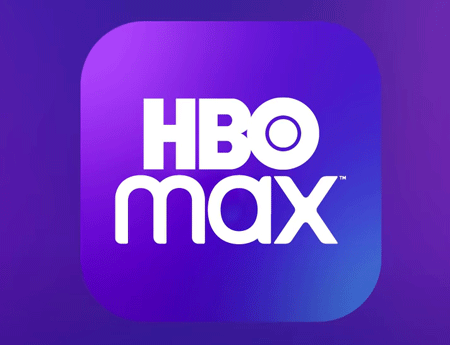HBO Max: The “New Coke” of 2020?
WarnerMedia’s new streaming service should have worried Netflix at launch, but a series of self-inflicted wounds got in the way. Center director Jeffrey Cole explains.
By Jeffrey Cole
Let’s be clear: HBO Max will be an extremely successful pay television and streaming service and will see healthy growth in the years ahead.
 Since HBO started in 1972 and became the first service to go on satellite in 1975 (creating a new industry and transforming television), it has been the leader in quality programming. It has won more Emmy awards (916) than any other network or channel in history. Even as Netflix has grown into a global monolith, it has a long way to go to catch up with HBO.
Since HBO started in 1972 and became the first service to go on satellite in 1975 (creating a new industry and transforming television), it has been the leader in quality programming. It has won more Emmy awards (916) than any other network or channel in history. Even as Netflix has grown into a global monolith, it has a long way to go to catch up with HBO.
In short: HBO is a jewel of a service that has consistently drawn great reviews, won awards, and made mountains of money and high ratings since it began almost 50 years ago. HBO made consistently better programming with its $2.5 billion original content budget than Netflix with $15 billion.
The list of HBO popular quality programming staggers the mind: The Sopranos, Sex and the City, Curb Your Enthusiasm, Six Feet Under, Game of Thrones, Succession, Big Little Lies, Last Week Tonight with John Oliver, and so much more. And this does not even begin to mention its great sports programming (including championship fights) and the best documentary film division to be found anywhere.
When AT&T acquired Time-Warner (HBO, Warner Bros., and Turner), it decided its crown jewel needed to be tweaked and enhanced to compete with Netflix. The telecommunications giant could see the former red-envelope service turned streamer closing the gap in its rear-view mirror.
They were right to invest their time, energy, and funds into making HBO better. The thought was to make it more like Netflix—producing more programming.
They just completely flubbed how they did it.
This flub will not kill HBO: the service is too strong for that. But AT&T created real uncertainty about the brand, frustrated customers, made it harder to receive, priced it uncompetitively, and stalled its growth. Even so, it will recover and thrive.
An uncanny parallel
Looking at the mistakes of turning HBO into HBO Max bears some striking similarities to the blunders with the introduction of New Coke in 1985.
Although the undisputed market leader and a firmly established part of American culture, The Coca-Cola Company started to feel increased competition from Pepsi. It decided that even though its customers were happy, they needed to tweak the formula and introduce something new and even better: New Coke.
They spent millions on massive advertising campaigns led by the most successful advertising spokesman of the 80s: Bill Cosby (given what we later learned about Cosby, this compounds the Greek tragedy aspect of the story).
Customers were confused: what is New Coke and where did “old Coke” go? Why was the change necessary? They tried New Coke and professed not to like it (blind taste tests told a different story). Coca-Cola didn’t account for fans feeling their childhood memories were being trampled. New Coke failed, and the company quickly re-introduced the old drink as Coca-Cola Classic. Some cynics suggested it was all a secret plot to get people to demand and appreciate old Coke.
Likewise, this year WarnerMedia (AT&T’s new name for Time-Warner) unveiled HBO Max. It was priced the same as HBO and offered everything from that service with additional content (including originals)—therefore the Max. It made sense to unveil during the pandemic because people were watching more television, working their way through Netflix and Disney+, and wanted new content (streaming was up 54% since March).
The problems were immediate. All were self-inflicted.
Confusion
Like New Coke, consumers didn’t know they wanted HBO Max. They were confused. Those who already subscribed to HBO through cable or as a stand-alone streamer asked questions like:
- What is HBO Max, do I need to do anything to get it?
- Is Max different from HBO? Will I still be able to see Succession or John Oliver?
- What happens to my old HBO?
- I already have HBO GO or HBO Now, is that the same as HBO Max?
- Do I have to pay more for HBO Max?
It’s never good to confuse and frustrate your current customers. As could be predicted, most did nothing and waited to see what happened.
Access
As customers bought new TVs or dropped cable, they had to be able to find and get streaming services. Netflix was so far ahead of everyone else they were able to cut deals with TV manufacturers to have a dedicated Netflix red button on the remote control. This will go down as one of the smartest moves in television history. No need to go to inputs, pull down a menu and choose a streamer: just push the red button once. There is only room for one or two of these large, direct buttons.
When AT&T acquired Time-Warner (HBO, Warner Bros., and Turner), it decided its crown jewel needed to be tweaked and enhanced to compete with Netflix. The telecommunications giant could see the former red-envelope service turned streamer closing the gap in its rear-view mirror. They were right to invest their time, energy, and funds into making HBO better. The thought was to make it more like Netflix—producing more programming. They just completely flubbed how they did it.
To get continued growth, HBO Max had to be available through one of the new ways to access streaming: Roku or Amazon Firestick. Just one small problem: HBO Max is not available on either device. This is a big deal: when Disney+ premiered Mulan on PVOD (Paid Video On-Demand), 54% of the audience watched it on Roku.
The challenge of getting a streaming service on Firestick and Roku is not technology: it’s business. It is nothing short of incomprehensible to unveil a new programming service that was not available on these devices. They should have waited.
Even New Coke had access to all the supermarkets.
Price
HBO Max was priced at $15 per month, which is what cable television subscribers had been paying for a while. However, pay TV costs can seem invisible since they are lumped into the overall cable bill.
By introducing it as a new service and, in many cases, directly billing the customer, HBO Max drew attention to the price. At $15 per month, HBO Max was three times the cost of Apple TV+, more than twice Disney+, and about $2 more than Netflix.
To WarnerMedia, the thought process must have been something like this: “This is the HBO that you have been paying $15 per month for, and we just added a lot more.”
True, but to the customer it drew unwanted attention that it cost more than any of the other services.
Recently, WarnerMedia had no choice but to lower the cost to $12, but only for the first year. Even if this mitigates the cost difference, look for cancelled subscriptions in a year when the price reverts.
The self-inflicted flubs deeply wounded the brand of the newly reconceived channel. Only about 4.5 million people added the new service since its May launch. Since last November, Disney+ has attracted close to 60 million new subscribers. In fairness, HBO already had about 34 million subscriptions. But all the new bells and whistles only attracted four million more people to HBO Max.
Like New Coke, the flubs and damage were all caused by internal decision making.
The best thing WarnerMedia could do is follow what Coke eventually did by making the re-introduced Coke Classic, simply Coke–just call the whole thing HBO.
The lessons learned from HBO Max are marketing lessons. The programming is first rate. Old fans know this and will continue watching their favorite programs. New fans will discover it. HBO will sort through the confusion, settle its feuds with Roku and Amazon, and then permanently lower its price. They will be a major competitor to Netflix, probably the major competitor.
It just all seemed so unnecessary.
____________

Jeffrey Cole is the founder and director of The Center for the Digital Future at USC Annenberg.
See all columns from the center.
October 21, 2020

